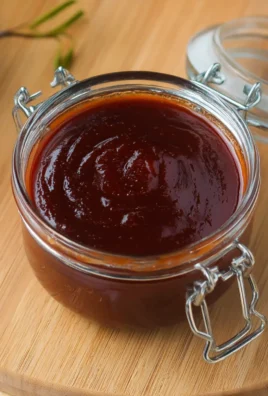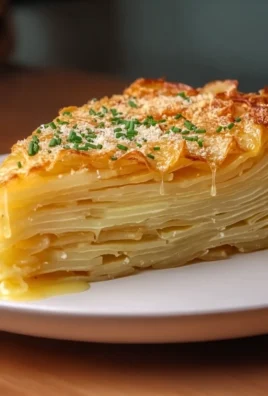
Cucumber and Tomato Salad is a refreshing dish that epitomizes simplicity and versatility. Made with crisp cucumbers, juicy tomatoes, and a vibrant dressing, this salad is an essential recipe in many cuisines around the world. Whether served as a side dish or a standalone meal, its appeal lies in its fresh flavors and ease of preparation. This section explores the origins, essential ingredients, tools, and step-by-step instructions to create the perfect Cucumber and Tomato Salad.
The Origins and Cultural Significance of Cucumber and Tomato Salad
The combination of cucumbers and tomatoes in salads has ancient roots and spans multiple culinary traditions. The simplicity of these ingredients, combined with their widespread availability, makes this dish a staple in homes and restaurants worldwide.
Historical Background
- Persian Influence:
- The Persian Shirazi Salad is one of the oldest versions of this dish. It combines finely diced cucumbers, tomatoes, and onions with herbs like parsley or mint, dressed with lime juice and olive oil. This salad reflects Persian culinary traditions that emphasize fresh, raw ingredients.
- Mediterranean Roots:
- In Mediterranean cuisine, Cucumber and Tomato Salad is a common accompaniment to grilled meats and seafood. Variations like the Israeli salad and Greek salad incorporate local flavors such as olives and feta cheese.
Cultural Significance
- Middle East: Served as a refreshing side to rich dishes like kebabs, hummus, and falafel.
- Eastern Europe: A simple version with sour cream or vinegar is often served alongside hearty meals.
- East Africa: Known as Kachumbari, it is spiced with chili and lemon juice, reflecting the region’s love for bold flavors.
Why Cucumber and Tomato Salad Is Universally Loved
Cucumber and Tomato Salad’s popularity can be attributed to its:
- Ease of Preparation: Requires minimal cooking skills and a short preparation time.
- Customizability: Adaptable to different cuisines, dietary preferences, and available ingredients.
- Nutritional Value: Packed with vitamins, antioxidants, and hydration, it’s a healthy addition to any meal.
- Versatility: Can be served as a side dish, appetizer, or light main course.
Essential Ingredients for Cucumber and Tomato Salad
The key to a great Cucumber and Tomato Salad lies in the quality and balance of its ingredients. Here’s a detailed breakdown of each component:
1. Cucumbers
- Flavor and Texture: Cucumbers add a crisp, refreshing element to the salad.
- Varieties:
- English Cucumbers: Preferred for their thin skin and fewer seeds.
- Persian Cucumbers: Smaller and sweeter, offering a more delicate crunch.
- Garden Cucumbers: Larger and more robust, with thicker skin that can be peeled.
Preparation Tip: If using cucumbers with thick skin or large seeds, consider peeling and deseeding them to improve the texture.
2. Tomatoes
- Flavor: Tomatoes bring juiciness and natural sweetness to the salad.
- Varieties:
- Cherry or Grape Tomatoes: Bite-sized and naturally sweet.
- Roma Tomatoes: Firm and less watery, ideal for salads.
- Heirloom Tomatoes: Provide vibrant colors and a rich, robust flavor.
Preparation Tip: For a more refined salad, remove the seeds and excess juice from larger tomatoes to prevent the salad from becoming watery.
3. Red Onions
- Flavor: Red onions add a sharp, tangy bite that balances the sweetness of the tomatoes.
- Preparation Tip: To mellow the flavor, soak sliced onions in cold water for 10–15 minutes before adding them to the salad.
4. Fresh Herbs
- Common Choices: Parsley, mint, dill, or cilantro.
- Flavor Contribution: Herbs add a fresh, aromatic dimension to the salad.
- Preparation Tip: Use freshly chopped herbs for the best flavor and color.
5. The Dressing
The dressing is the glue that ties the salad together. A classic dressing for Cucumber and Tomato Salad includes:
- Extra Virgin Olive Oil: Adds richness and enhances the natural flavors of the vegetables.
- Acidity: Lemon juice, lime juice, or vinegar provides a tangy contrast.
- Seasonings: Salt, black pepper, and sometimes dried oregano or sumac for depth.
Preparation Tip: Whisk the dressing ingredients until emulsified to ensure even coating.
Tools and Equipment for Preparation
1. Chef’s Knife
- Essential for slicing cucumbers, tomatoes, and onions uniformly.
2. Cutting Board
- Provides a stable surface for chopping and slicing.
3. Mixing Bowl
- A large mixing bowl allows you to toss the ingredients without spilling.
4. Whisk or Fork
- For blending the dressing into a smooth, emulsified mixture.
5. Optional: Salad Spinner
- Useful for drying herbs or vegetables after washing to prevent excess water in the salad.
Step-by-Step Preparation Instructions
1. Wash and Prepare the Vegetables
- Rinse cucumbers, tomatoes, and herbs under cold running water to remove any dirt or residue.
- Pat them dry with a clean kitchen towel or use a salad spinner to remove excess moisture.
2. Slice and Dice
- Slice the cucumbers into rounds or half-moons, depending on preference.
- Dice the tomatoes into bite-sized pieces or halve cherry tomatoes for uniformity.
- Finely chop the red onions and herbs.
Tip: Keep all pieces of similar size to ensure an even distribution of flavors.
3. Make the Dressing
- In a small bowl, combine 3 tablespoons of olive oil, 2 tablespoons of lemon juice, 1 teaspoon of dried oregano, and a pinch of salt and pepper.
- Whisk until the mixture is smooth and emulsified. Taste and adjust seasoning as needed.
4. Assemble the Salad
- In a large mixing bowl, combine the cucumbers, tomatoes, red onions, and fresh herbs.
- Pour the dressing over the vegetables and toss gently to coat evenly.
5. Optional: Add Extras
- For a heartier version, add crumbled feta cheese, sliced Kalamata olives, or diced avocado.
- Sprinkle with a pinch of sumac or paprika for added flavor and color.
6. Serve and Enjoy
- Transfer the salad to a serving dish.
- Garnish with additional herbs or a drizzle of olive oil for presentation.
Pro Tip: Serve immediately for the freshest flavor, or let the salad sit for 15–20 minutes to allow the flavors to meld together.




Leave a Comment